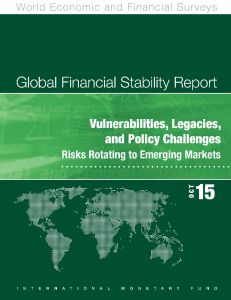Join getAbstract to access the summary!

Join getAbstract to access the summary!
International Monetary Fund
Vulnerabilities, Legacies, and Policy Challenges
Risks Rotating to Emerging Markets. Global Financial Stability Report October 2015
IMF, 2015
What's inside?
Financial and economic risks have shifted back to emerging markets.
Recommendation
During the Great Recession, the world changed: The financial markets of the United States and Europe went from stalwarts to laggards, while all the action was in China and other emerging economies. Now the world is pivoting again, in a cycle of “risk rotating to emerging markets.” This comprehensive, even-handed report from the International Monetary Fund offers reams of data and charts that outline how global markets are shifting, why liquidity remains a challenge and how rising corporate debt in emerging markets poses new risks. Readers, be warned: Economists have written this analysis for a professional audience. They offer little in the way of punchy prose or concrete examples to help lay readers, but the information is solid. getAbstract recommends this authoritative paper to investors, executives and policy makers seeking an in-depth look at swings in global markets.
Summary
About the Author
The International Monetary Fund advises member nations on policy issues and works to promote economic stability and well-being.



































Comment on this summary